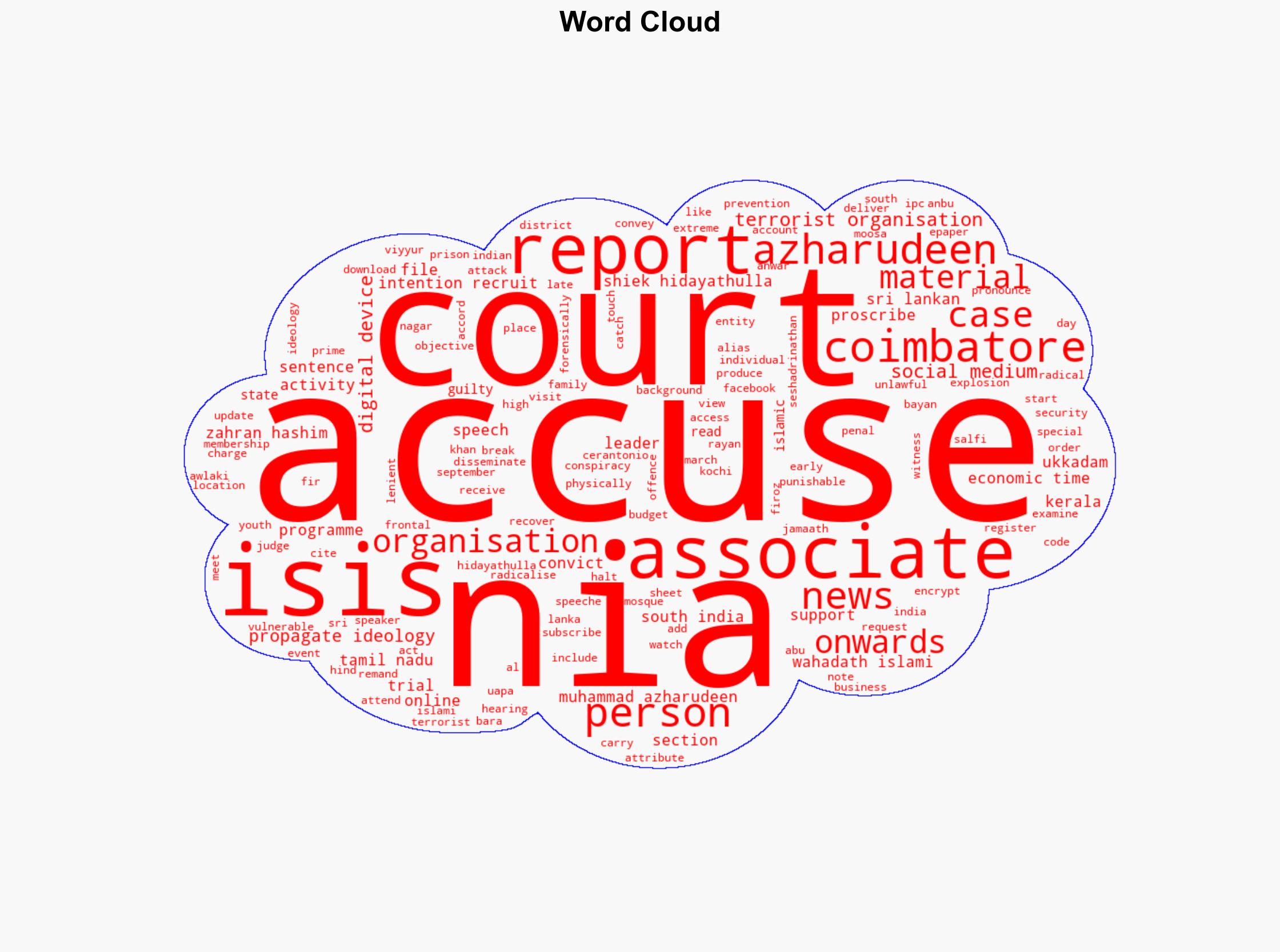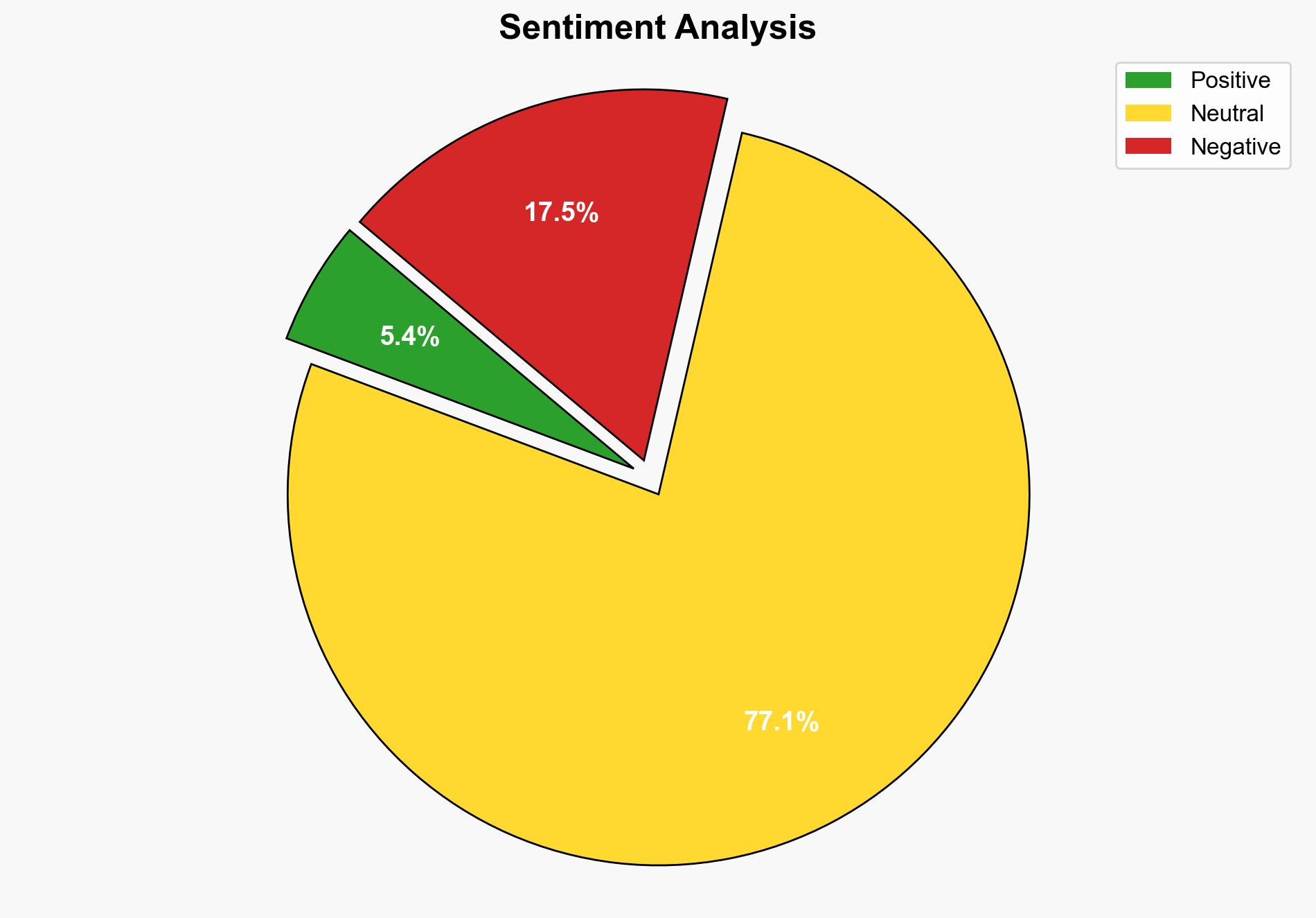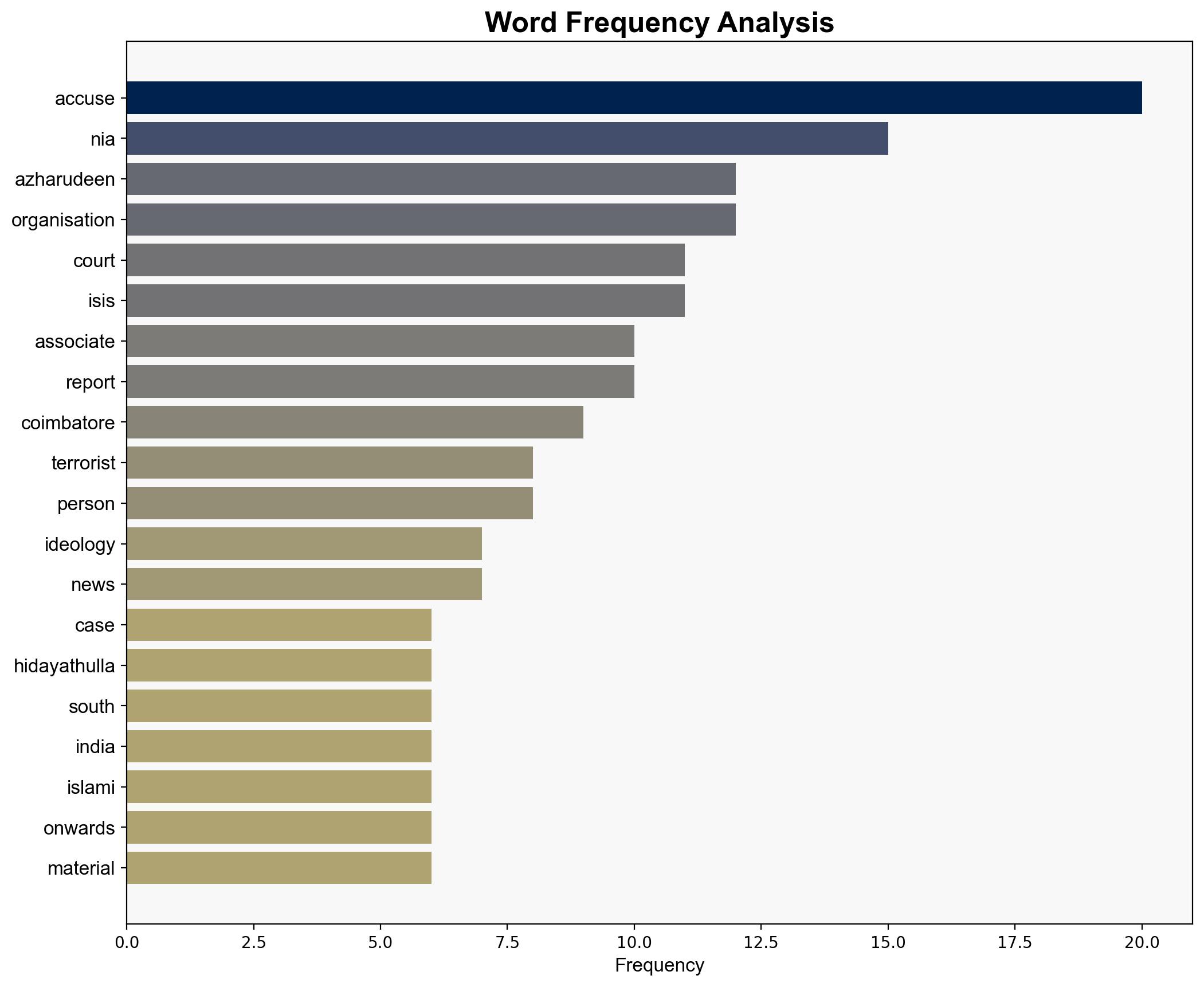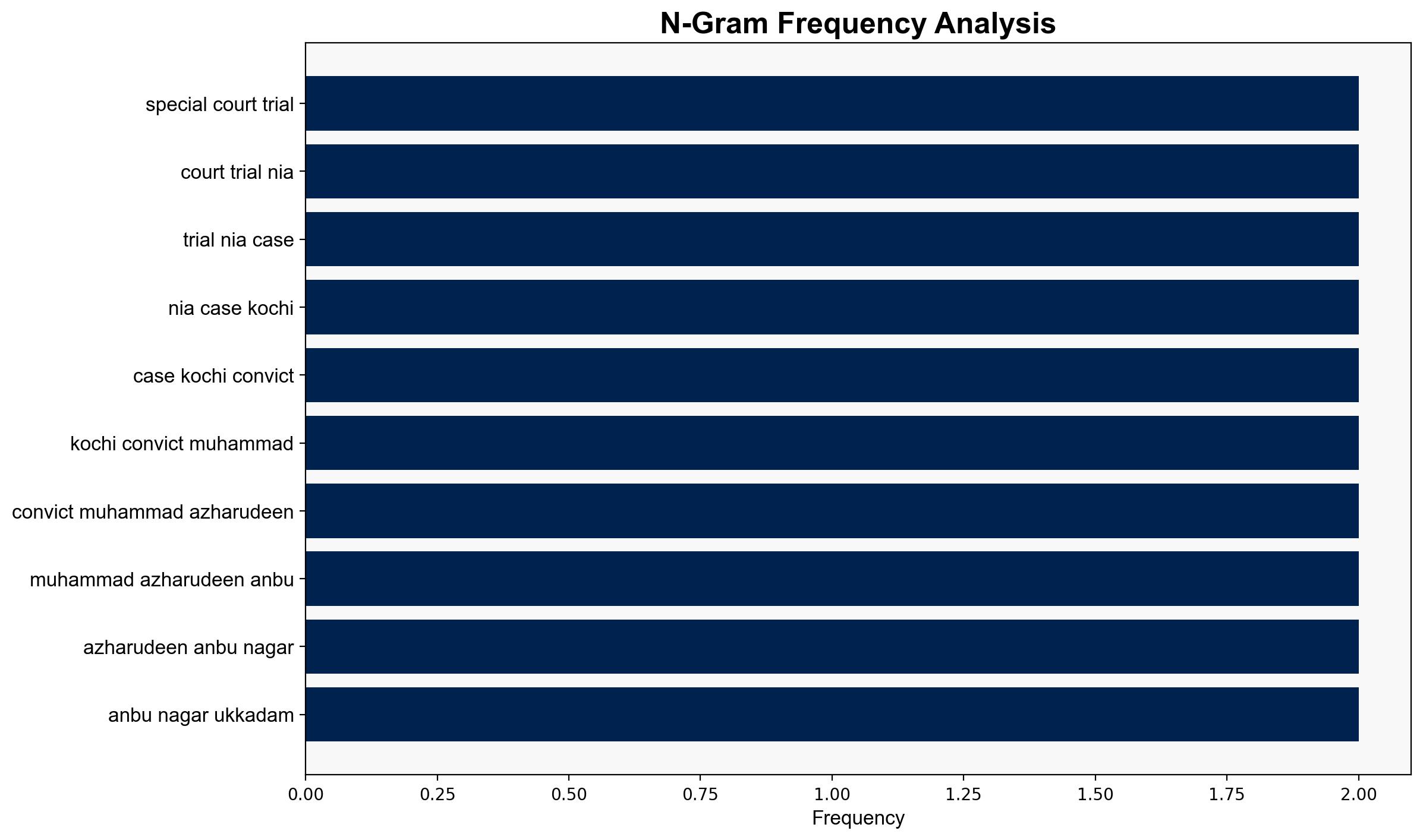NIA court finds two guilty in 2019 Coimbatore ISIS case – The Times of India
Published on: 2025-09-27
Intelligence Report: NIA court finds two guilty in 2019 Coimbatore ISIS case – The Times of India
1. BLUF (Bottom Line Up Front)
The most supported hypothesis is that Muhammad Azharudeen and Shiek Hidayathulla were actively involved in recruiting and propagating ISIS ideology in South India, specifically targeting vulnerable youth for radicalization. The confidence level in this assessment is moderate due to the reliance on digital evidence and witness testimonies. Recommended action includes enhancing monitoring of digital communications and community engagement to prevent further radicalization.
2. Competing Hypotheses
1. **Hypothesis A**: Muhammad Azharudeen and Shiek Hidayathulla were actively involved in recruiting and propagating ISIS ideology in South India, intending to carry out terrorist activities.
2. **Hypothesis B**: The accused were not directly involved in ISIS activities but were instead caught in a broader security sweep, with their actions misinterpreted due to their associations and digital footprint.
Using the Analysis of Competing Hypotheses (ACH) 2.0, Hypothesis A is better supported due to the forensic recovery of digital evidence linking them to ISIS propaganda and communications with known ISIS figures. Hypothesis B lacks substantial evidence and relies on the assumption of misinterpretation.
3. Key Assumptions and Red Flags
– **Assumptions**: It is assumed that digital evidence accurately reflects the intentions and actions of the accused. The reliability of witness testimonies is also assumed.
– **Red Flags**: Potential bias in interpreting digital communications and the possibility of coerced testimonies. The absence of direct evidence linking the accused to specific terrorist acts is a notable gap.
4. Implications and Strategic Risks
The case highlights the risk of digital platforms being used for radicalization and recruitment by terrorist organizations. There is a potential for escalation if similar networks are not identified and dismantled. Geopolitically, the involvement of Sri Lankan entities suggests a regional dimension to ISIS activities, necessitating cross-border intelligence cooperation.
5. Recommendations and Outlook
- Enhance digital surveillance and intelligence-sharing mechanisms to detect and disrupt online radicalization efforts.
- Engage with community leaders to foster resilience against extremist ideologies.
- Scenario Projections:
- **Best Case**: Successful disruption of ISIS recruitment networks, leading to decreased radicalization.
- **Worst Case**: Failure to address digital radicalization, resulting in increased terrorist activities in the region.
- **Most Likely**: Continued attempts at recruitment with sporadic successes, necessitating ongoing vigilance.
6. Key Individuals and Entities
– Muhammad Azharudeen
– Shiek Hidayathulla (alias Firoz Khan)
– Zahran Hashim (Sri Lankan ISIS leader)
7. Thematic Tags
national security threats, cybersecurity, counter-terrorism, regional focus





